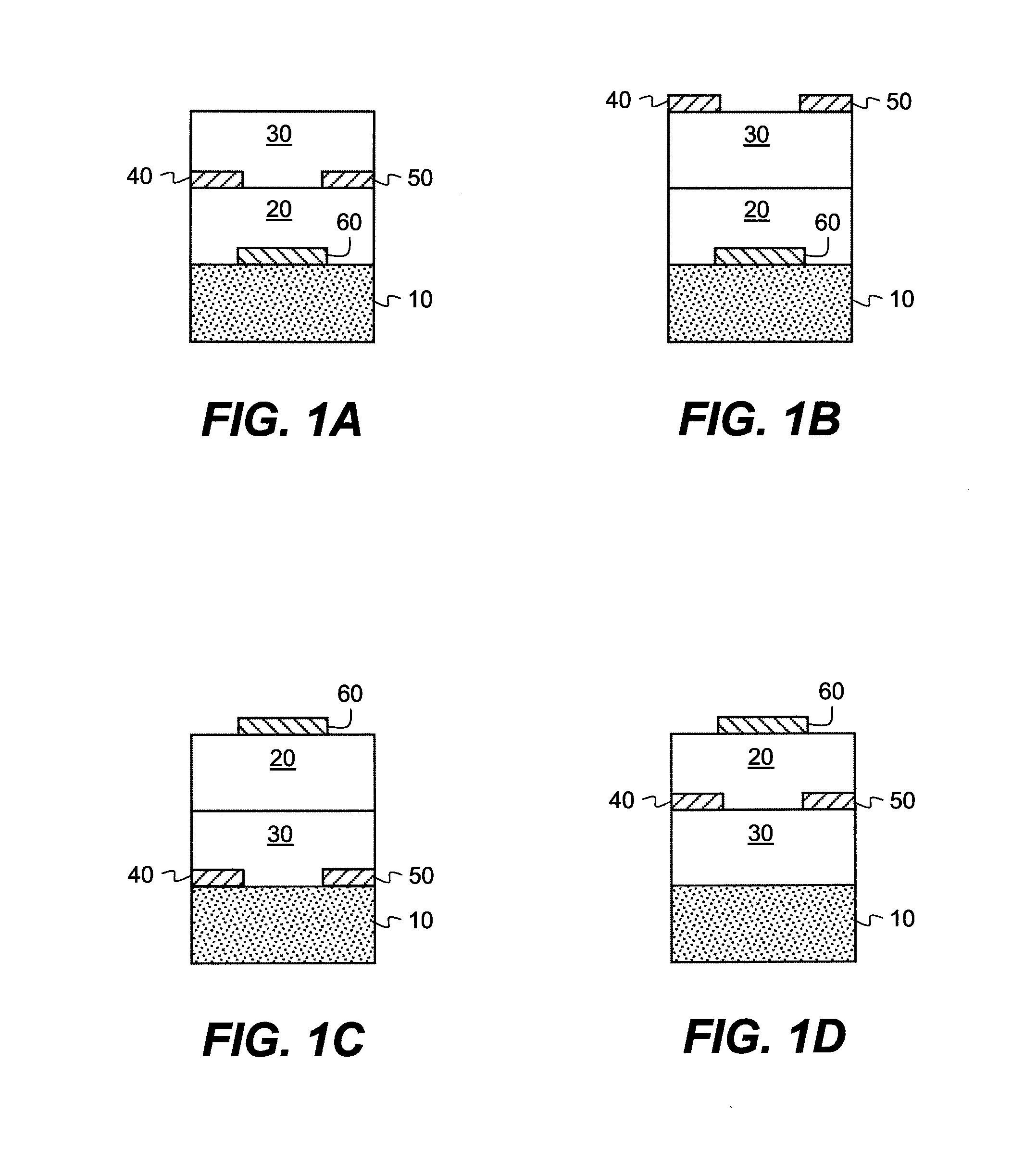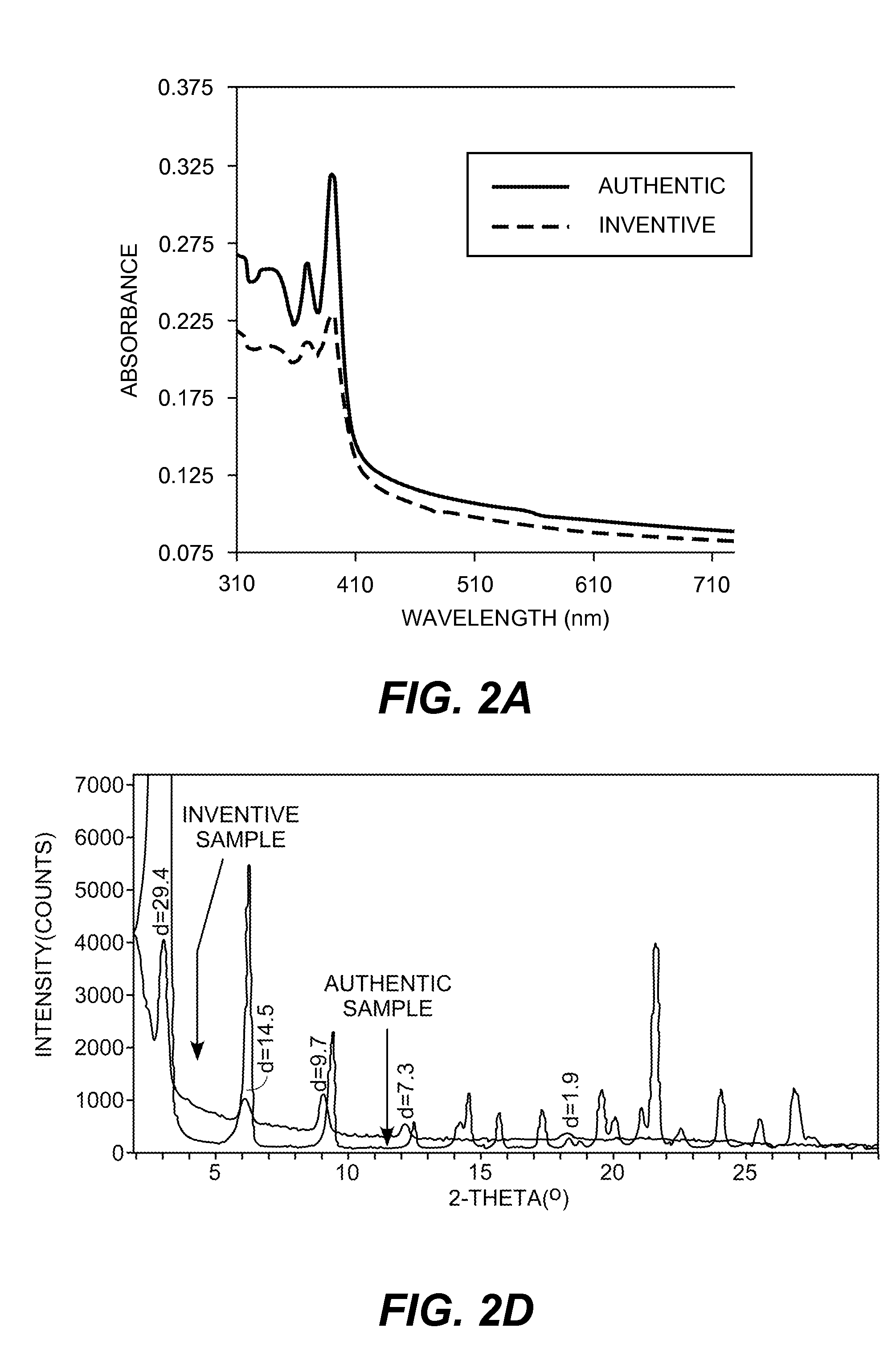Methods of preparing semiconductive compositions and devices
a technology of arylene diimide and composition, applied in the field of preparing thin films of arylene diimide compounds, can solve the problems of requiring relatively costly processes, limited application of amorphous silicon to low-speed devices, etc., and achieves the effects of convenient preparation, convenient and convenient preparation, and readily available materials
- Summary
- Abstract
- Description
- Claims
- Application Information
AI Technical Summary
Benefits of technology
Problems solved by technology
Method used
Image
Examples
invention example 1
Preparation of 1,5-Naphthalenedicarboxylic acid-4,8-bis[(dodecylamino)-carbonyl]
[0258]
[0259]To a stirred dispersion of freshly sublimed 1,4,5,8 naphthalene tetracarboxylic acid dianhydride (46 mg) in dimethylacetamide (4 ml), a solution of dodecylamine (67 mg) in dimethylacetamide (1 ml) was added dropwise to obtain a clear pale yellow solution. Solvent was removed under reduced pressure to obtain an oily solid. 1H and 13C NMR spectra of the product were consistent with assigned structure.
Conversion of 1,5-Naphthalenedicarboxylic acid-4,8-bis[(dodecylamino)-carbonyl] to N,N′-Bis(dodecyl)naphthalene diimide in Solid State
[0260]
[0261]A 2 wt. % solution of 1,5-naphthalenedicarboxylic acid-4,8-bis[(dodecylmino)carbonyl] in dimethylacetamide was drop cast onto a glass plate and solvent evaporated to form an article with the coated amic acid precursor. Absorption spectrum was recorded and the plate was heated at 180° C. for 20 minutes. Absorption spectrum after heating clearly shows the t...
invention example 2
Preparation of 1,5-naphthalenedicarboxylic acid-4,8-bis[(cyclopentylamino)carbonyl]
[0263]
[0264]Freshly sublimed 1,4,5,8-napthalene tetracarboxylic acid dianhydride (44 mg, 0.16 mmol) was added to dimethylacetamide (2 ml) and sonicated for 5 minutes to form a slightly cloudy dispersion. A solution of cyclopentylamine (28 mg; 0.32 mmol) in dimethylacetamide (1 ml) was slowly added to the dispersion to obtain a clear pale yellow solution. Solvent removed under reduced pressure to obtain a solid. 1H and 13C NMR and of the product were consistent with assigned structure. 1H NMR and IR spectra of the product were consistent with assigned structure.
Conversion of 1,5-naphthalenedicarboxylic acid-4,8-bis[(cyclopentylamino)carbonyl] to N,N′-bis(cyclopentyl)naphthalene diimide in Solid State
[0265]
[0266]A 2 wt. % solution of 1,5-naphthalenedicarboxylic acid-4,8-bis[(cyclopentyl)carbonyl] was spin coated onto a glass plate at 800 RPM to form an article coated with an amic acid precursor. The gla...
invention example 3
Thin Film Device Preparation
OTFT Test Device Preparation Employing Arylene Diimide Generated in Thin Solid Film from Amic Acid Precursor
[0268]In order to test the electrical characteristics of the semiconductive material, field-effect transistors were made using the top-contact geometry described above. The substrate was a heavily doped silicon wafer, which also served as the gate electrode of the transistor. The gate dielectric was a thermally grown SiO2 layer with a thickness of 190 nm. The wafer was cleaned for 10 minutes in a piranah solution, followed by a 6-minute exposure in a UV / ozone chamber. The cleaned surface was then treated with a self-assembled monolayer of octadecyltrichlorosilane (OTS), made from a heptane solution under a humidity-controlled environment. Water contact angles and layer thickness were measured to ensure the quality of the treated surface. Surfaces with a good quality OTS layer have water contact angles >90° and a thickness determined from ellipsometr...
PUM
 Login to View More
Login to View More Abstract
Description
Claims
Application Information
 Login to View More
Login to View More - R&D
- Intellectual Property
- Life Sciences
- Materials
- Tech Scout
- Unparalleled Data Quality
- Higher Quality Content
- 60% Fewer Hallucinations
Browse by: Latest US Patents, China's latest patents, Technical Efficacy Thesaurus, Application Domain, Technology Topic, Popular Technical Reports.
© 2025 PatSnap. All rights reserved.Legal|Privacy policy|Modern Slavery Act Transparency Statement|Sitemap|About US| Contact US: help@patsnap.com



